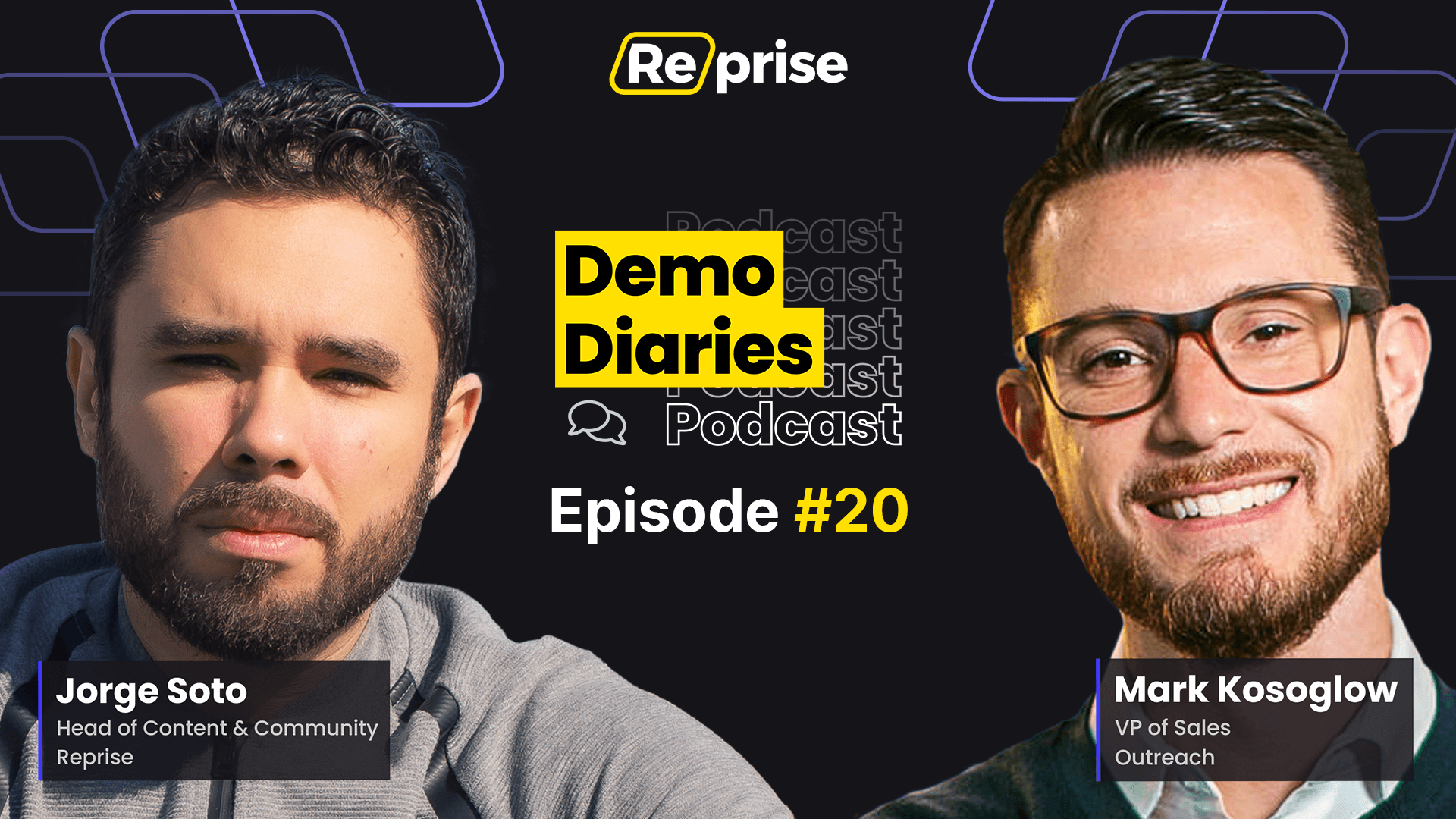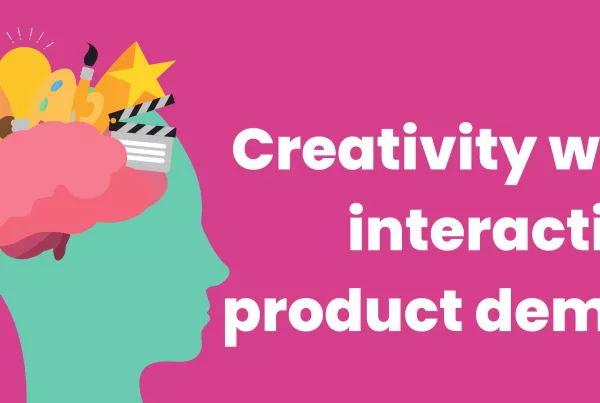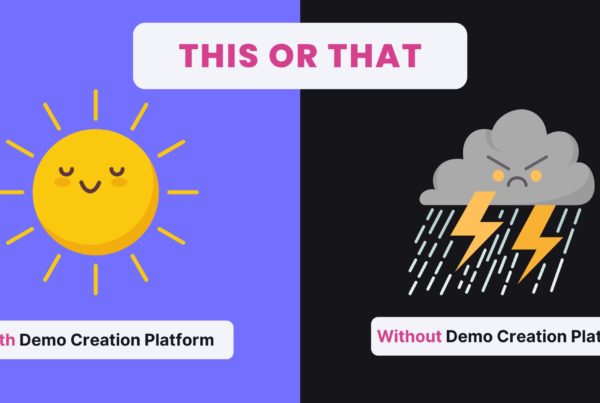Why aren’t your demos more like a movie? Mark Kosoglow, who was the first sales hire at Outreach.io and currently VP of Sales there, wants to know. So I talked to him on a recent episode of the Demo Diaries podcast to find out what he learned from 1) killing it at sales, and 2) sitting through 100 demos in a few months. You won’t want to miss this recap!
Meet Mark
He lives in Central Pennsylvania (not exactly Silicon Valley), and started his sales careers in more traditional industries selling to schools and school districts. Since he loved sales, he started a blog about it. Once he began getting more readers, they introduced him to many people including Manny Medina from Outreach.io.
They became friends and started chatting regularly, and Mark eventually wondered why he wasn’t working for him. Manny said they couldn’t afford him but Mark offered to work on commission only – they sold $1 million of software in 6 months to begin and he’s still there. Faith, family, and Outreach are his only hobbies, and that focus and passion have led to his success, which he’s very proud of.
Salespeople as Philosophers
Sales is supposed to introduce a topic of conversation, a provoking thought, or a new bit of info or education. Then the salesperson guides the prospect through their own internal way of digesting that information and coming to their own truth about it. That’s not any different than philosophy to Mark.
For example, when he’s selling Outreach, his truth is that he believes Outreach is the best product. His prospect might not have that truth, but he’s interested in following the path to the truth that is theirs together.
Most salespeople want to take you down a path vs. guiding you down your own path. Mark is interested in a good journey no matter the end result – he’s stopped caring about making the sale, and lost what he calls “the stink of desperation.” Now he’s on a journey with the person he’s talking to, and that’s the goal in itself.
New Steps in the SaaS Sales Motion
In the beginning of learning how to sell a product, you don’t even quite know what to say. You’re figuring out how to verbalize this thing you believe in, in a way that people respond to? How do you make them want more information?
The next step for Mark is now that the pitch is coming together, how can you position it against the values and challenges people are dealing with and considering right now. That helps you decide how to contextualize it for each person you’re talking to, and understanding the limitations of what your product does and how you frame those limitations.
In the beginning of his career at Outreach it was really a dialogue – learning how to pitch while prospects were learning what the company was doing. It’s changed because this category of software isn’t brand new anymore, so most people he talks to have at least a basic understanding of it. Sales conversations now are less education and more discovering what their specific challenges are.
B2C vs. B2B SaaS Sales
While a lot of people want to make the B2B software sales world mimic the B2C one, Mark says that’s just not realistic in many cases. B2C buyers can try a product out for a few months with a few clicks to install, see the value, and make a simple purchase. But their income doesn’t depend on the performance and features of the software, and a lot of buying comes down to individual preferences.
In the B2B software world, on the other hand, they’re mostly gigantic platforms that customers don’t understand without at least some guidance. And it doesn’t matter as much if you like the software if it’s helping you achieve your business goals. Plus, switching platforms after a year or two of use is a huge hurdle.
You can create a freemium model with some less complex B2B products, but complex ones are not something you can really dig into with a two-week free trial. Someone has to help you figure it out, and a lot of people end up at a bad destination because they don’t have the right guide from the beginning. A salesperson needs to guide you down a path so you feel confident where you end up.
Why SaaS Demos Shouldn’t Be Boring
Mark had a nine-month period where he sat through 100 demos of different products, in order to find the best demo he could base Outreach’s demo on. And he only saw one he liked – all the others, he started to tune out.
When you’re creating a demo, he says, you need to decide if you want to be a DC or a Marvel movie. One has random, weird stuff going on with all these confusing storylines – it’s just hard to understand. And the other immediately makes you ask what’s going on in a great way, where you want to see what’s happening but you don’t feel overwhelmed.
When he does demo prep with his team, they try to approach the demo as a movie script. How do they pull the audience in, interject the differentiators, who is the villain and where is the conflict? He recently did a poll on Linkedin about education versus entertainment in enablement and entertainment won, hands down. People just don’t care about your demo if it’s boring – they’d rather have less information and more entertainment right now.
Watch the full episode here:




